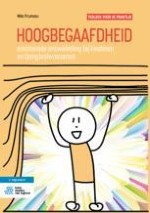Samenvatting
Dit hoofdstuk beschrijft POSI. In het Engels noemen we de Krachten Potentials, de Kansen Openings, de Obstakels Shackles, en de Ontwikkelpunten Infirmities, vandaar de afkorting POSI. Potentials zijn de interne Krachten of sterke kanten van een individu. Openings zijn de externe sterke of helpende krachten, in het Nederlands Kansen genoemd. De Shackles zijn de Obstakels vanuit de omgeving. Infirmities staat voor de minder sterke interne kanten van het individu, ook wel Ontwikkelpunten genoemd. Er wordt gestart met de beschrijving van de complete methodiek van het eerste werkblad van de Goodness-of-Fit Dialoog Toolbox. Dit POSI-werkblad geeft visueel de Krachten en Ontwikkelpunten intern en extern weer, waarmee het zowel de positieve aspecten als negatieve kan tonen. Vervolgens wordt elk POSI-onderdeel afzonderlijk uitgewerkt. Ter verduidelijking worden voorbeelden en casuïstiek aan de hand van de POSI-kaarttool getoond. Aanvullend wordt uitgelegd hoe de POSI-webapp werkt.
